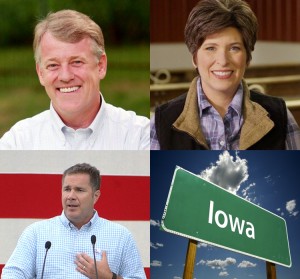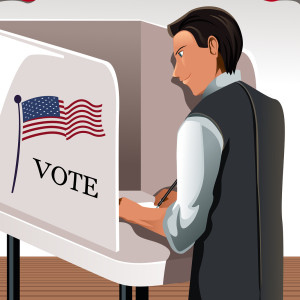Welcome back for the conclusion of this series.
Click here for Part 1, Part 2, Part 3, and Part 4. A brief August update. And the final update—Why Joni Ernst will be the next US Senator from Iowa.
I made it clear on Wednesday that Democrats, despite recent indications that polls are tightening, remain on track to win in November. Republicans can absolutely change this, but it is an uphill battle. Why? Money.
Because voting is habitual, it will take Republicans substantially more money to win the Iowa Senate race than Democrats. Democrats have had higher turnout for several cycles, and it is difficult to reduce that.
Earlier, I constructed a model for registration that proved a good fit in out-of-sample tests. It is possible to use the county-level predictions from this model as inputs for the turnout model. There are inevitably errors in the registration model, but as before, they are ultimately being used in aggregate, averaging the errors to roughly zero, assuming a normal distribution. While there may be ways that these registration projections could change in the months leading up to Election Day, we will hold registration constant while examining the impact of money on turnout.
The figure below presents a range of funding possibilities in the Senate race. Political strategists in Iowa believe Braley will have a minimum of $10 million to spend, but that number will rise if the race becomes more competitive. For this reason, three potential funding levels are shown for Braley: $10 million, $12 million, and $14 million.
Republicans are currently struggling in fundraising, but that will probably change once there is a nominee or a clear frontrunner for the nomination. GOP strategists have doubts that any of their potential nominees, including self-funder Mark Jacobs, could raise much beyond $10 million. With any level of funding less than $10 million, the model indicates a Republican will not win. In fact, in order to feel secure that the GOP nominee is heading toward victory, the GOP campaign will need to be prepared to spend at least $2 million more than Braley.
The model, however, does not present a linear relationship between money and turnout. The effect of GOP expenditures is logarithmic, showing diminishing returns on GOP turnout as more money is spent. Furthermore, it is expected that expenditures will have a tit-for-tat nature. If Republicans start to outspend Braley, Democrats will contribute more to the Braley campaign. Democratic spending depresses GOP turnout, and Republican spending depresses Democratic turnout. The more Democrats spend on the race, the more Republicans need to spend in order to win. If Braley spends $14 million, Republicans will need $17 million to win.
The one key element not included in this model is outside money, and it would be virtually impossible to add it. There is not any conclusive evidence of the potential impact of such spending, and when conservative outside groups enter a race, it’s very likely to trigger liberal groups to enter, and vice versa. It is probable that we would see similar effects in outside spending as we see in campaign spending. Conservative-leaning groups would need to substantially outspend liberal-leaning groups to deliver a GOP win.
While we have previously seen data indicating that campaign spending does not have a clear correlation to registration, this may be one of the best investments Republicans and Democrats could make. If they were to target individual voters using predictive modelling, we would likely see that there becomes a correlation between spending and registration. The model indicates this is one of the best levers either party has to influence the vote.
Models inevitably have errors, and they can never account for all of the externalities that exist in a complex world. But election modeling has proved remarkably accurate over the course of the past few cycles, both at the micro and macro levels. This model is somewhere in between those because it allows us to look all the way down to county-level predictions. I am confident in its predictive ability if current conditions hold. I’ve tried to be transparent in how the modelling was done, and I believe this report constitutes one of the most detailed statistical reports ever made public prior to an election. I am confident that there will be critics, and some of their complaints will be well-justified. Ultimately, whether the model is right or wrong will be determined by what happens on Election Day.


